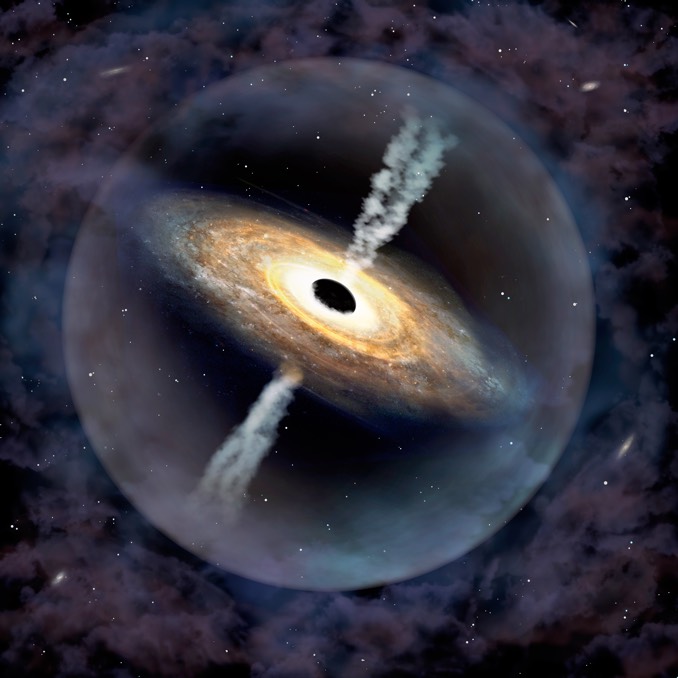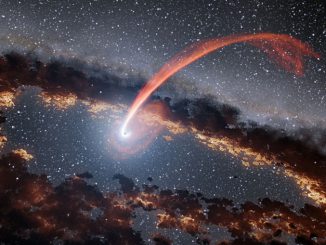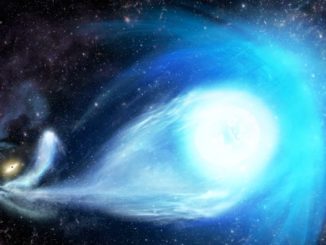
In yet another deep space head scratcher, astronomers have found a monster black hole with 1.5 billion times the mass of the Sun dating back to within 700 million years of the Big Bang. It is the second most distant quasar ever found and one with twice the mass of the only other supermassive black hole from the same epoch.
The question is, how did the ultra-massive black hole form and evolve so quickly? To reach 1.5 billion solar masses that early in the universe’s history, a 10,000-solar-mass “seed” black hole would have had to form within about 100 million years of the Big Bang. That would appear to rule out processes that start with a black hole formed by the collapse of a single star.
“How can the Universe produce such a massive black hole so early in its history?” asked Xiaohui Fan, Regents’ professor and associate department head of the Department of Astronomy at the University of Arizona. “This discovery presents the biggest challenge yet for the theory of black hole formation and growth in the early Universe.”
Formally catalogued as J1007+2115, the gargantuan black hole was noted as a possible quasar in surveys carried out with the 4-metre Victor M. Blanco telescope in Chile. The object was observed by the Gemini North and W.M. Keck observatories in 2019, along with the University of Hawaii-owned United Kingdom Infrared Telescope.
In honour of its confirmation from Maunakea in Hawaii, the quasar was given a native Hawaiian name by area educators: Pōniuāʻena, meaning “unseen spinning source of creation, surrounded with brilliance.” It is the first quasar to be so named.
“Pōniuāʻena is the most distant object known in the Universe hosting a black hole exceeding one billion solar masses,” said Jinyi Yang, a research associate at the University of Arizona’s Steward Observatory.

Current theory holds that stars and galaxies first began shining during the reionisation epoch starting some 400 million years after the Big Bang. The first supermassive black holes are thought to have formed during that same period.
“The discovery of quasars like Pōniuāʻena, deep into the reionisation epoch, is a big step towards understanding this process of reionisation and the formation of early supermassive black holes and massive galaxies,” according to a joint release describing the discovery. “Pōniuāʻena has placed new and important constraints on the evolution of the matter between galaxies (intergalactic medium) in the reionisation epoch.”
A research paper discussing the observations and conclusions has been accepted by The Astrophysical Journal Letters.



